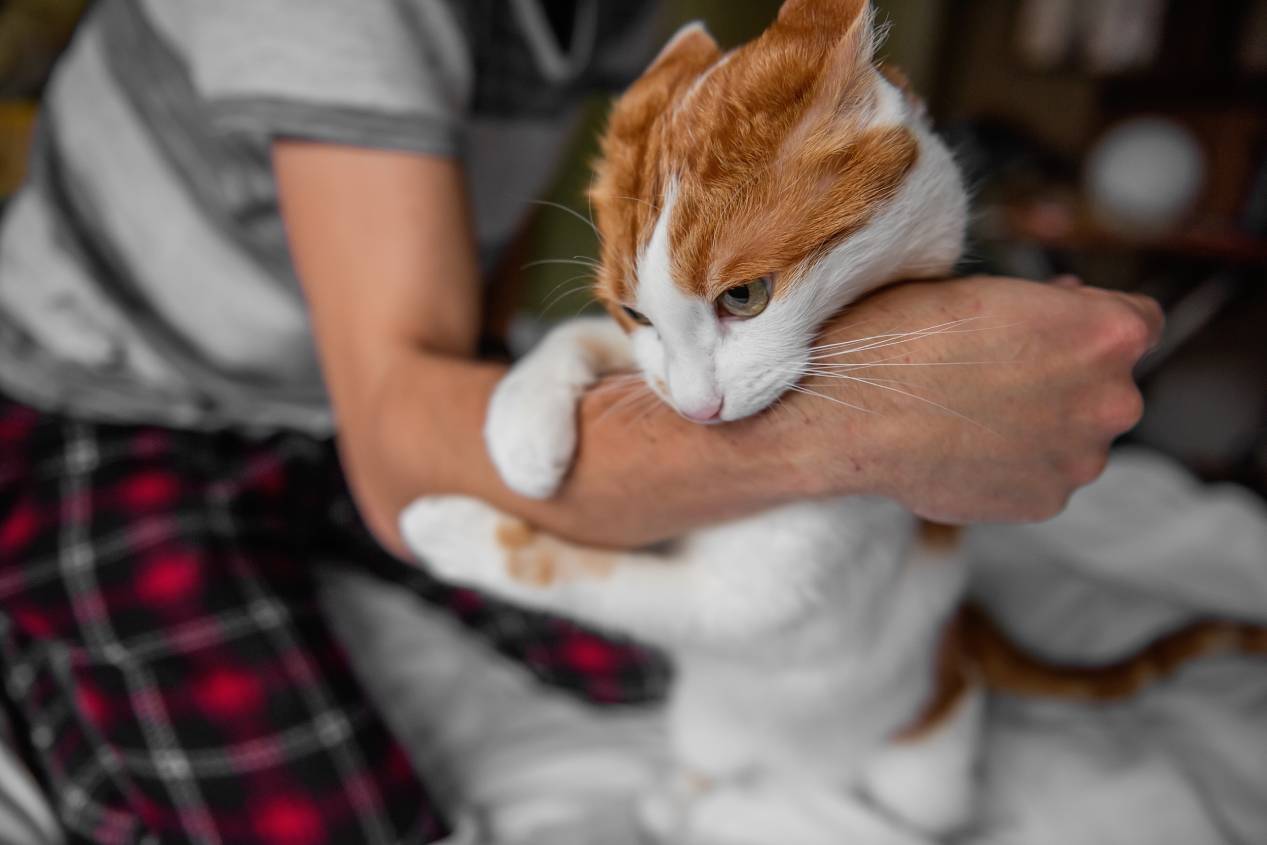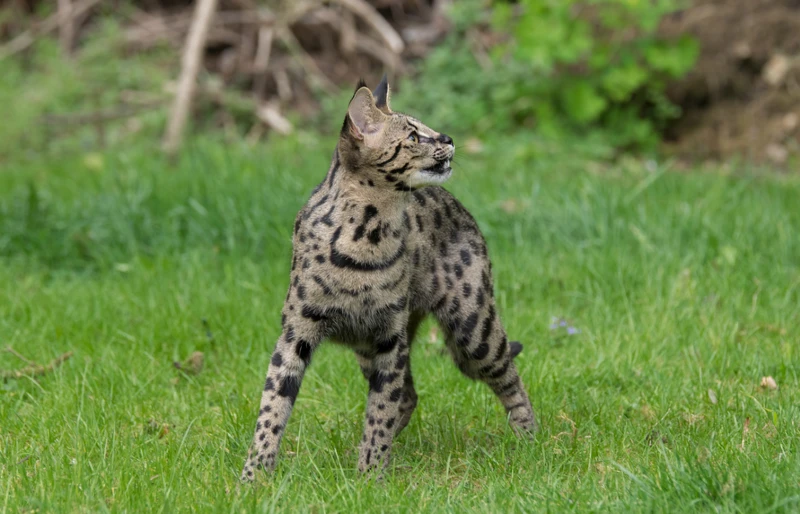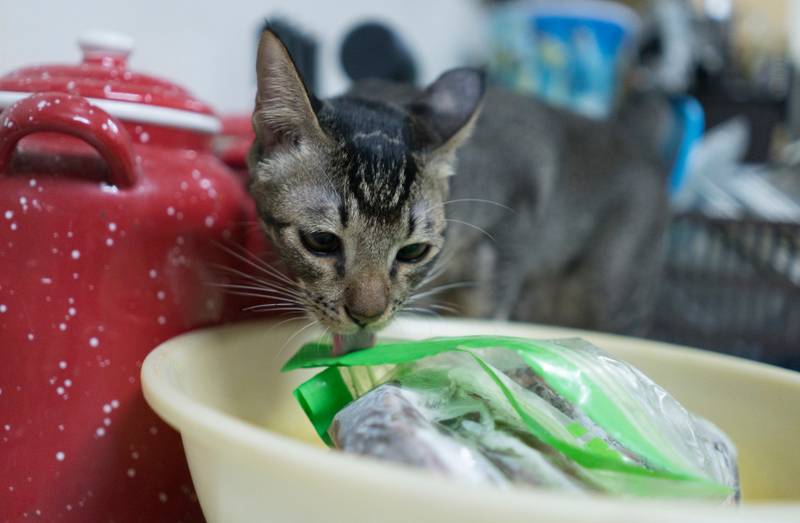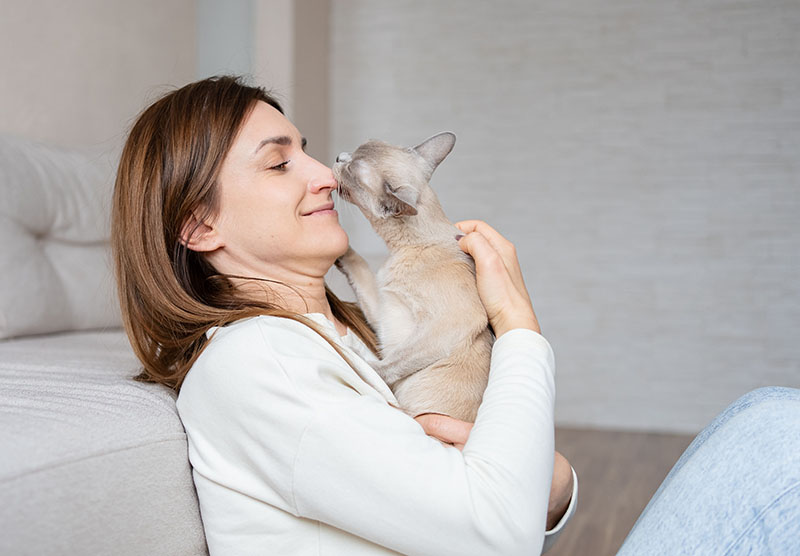VET APPROVED

The information is current and up-to-date in accordance with the latest veterinarian research.
Learn more »Click to Skip Ahead
All pets have something unique to offer, and that’s what makes them special. The only issue that some people have with the feline community is that they are sometimes misguided in their use of their lightning-fast reflexes.
For example, a cat may pounce on their owner’s arm as though it’s prey and try to bite off a huge chunk of meat—at least, that’s how it seems, anyway!
If you’d like to know why your cat likes to indulge in such an act, keep on reading. We also share first-aid tips on how to treat the bite, while you wait to get it looked at, and ways that you can prevent it from happening more frequently. However, if your cat has bitten or scratched you, it’s important to seek prompt medical advice from your doctor, as even a small superficial wound can become infected.

The 7 Vet-Reviewed Reasons Why Your Cat Grabs and Bites Your Arm
1. Honing Hunting Skills
Kittens are cute and cuddly, and that’s why it’s easy for some people to forget that they are also budding hunters. They’ll bite whatever they can get their paws on, especially while playing with their littermates, to develop their hunting skill.
Otherwise, they may not be able to survive in the wild if they aren’t proficient hunters. They don’t know that their food will be provided to them by their human at that stage. Even if you always make sure they have everything that they need, they’ll still work hard to perfect the skill in case they ever need it one day.
By teasing them from kittenhood using your hands or fingers, thinking they can’t do much damage, which is a common misconception, they may indulge in this type of play when they grow up, considering your fingers a moving target. Use toys instead and redirect their attention away from your hands.
2. Teething Pain
Teething kittens may exhibit traits that are similar to those of teething babies. They are often ready to bite and chew on anything, hoping to ease the discomfort and pain that characterizes the teething process.
The teething stage is an important time to let your kitten know that it’s wrong to chew or bite your arm, by redirecting the biting to chew toys.
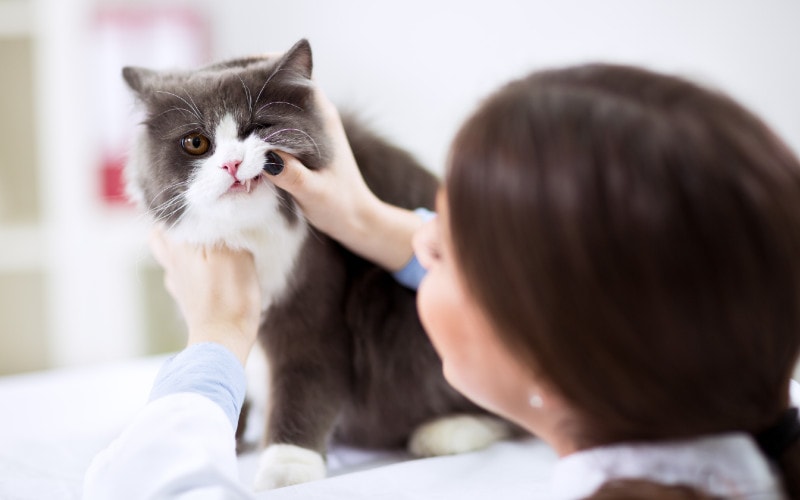
3. Play Biting
While this form of behavior is considered common among kittens, adult cats can exhibit it while playing with their peers, typically when they are in a good mood or feel content. By “playing,” we mean the cats stalking and pouncing on each other, the same way that they would while hunting their preferred prey.
Play-biting is equally important to indoor cats because they are innate predators. Being natural hunters, it’s the only avenue that they can use to exercise the need to claw, pounce, or bite small mammals and birds.
4. Communication
Biting as a form of communication is what experts like to call “unprovoked biting.” You likely find it aggressive and annoying, but you should realize that it’s your cat’s civil way of letting you know that you need to stop petting certain areas of their bodies.
Cats are different from dogs in the sense that they may react in a way that humans may label as negative, as a response to overstimulation or excitement. Of course, they’ll give you subtle signs if they’d like you to stop, but if you’re not paying attention or reading the cues, they’ll resort to a more direct approach.
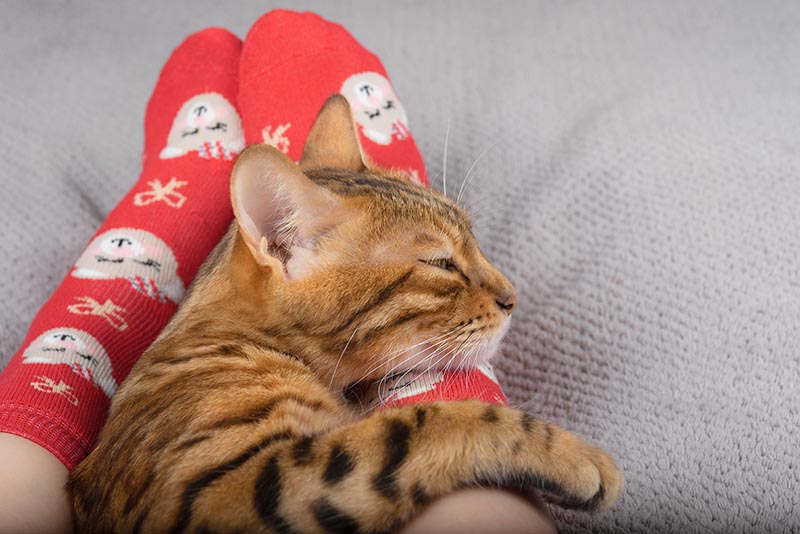
5. Showing Affection
Biting or nibbling your arm once in a while might not necessarily be a bad sign, as most cats are known to show love and affection that way. Have a look at what the mother cat does when she’s grooming her kittens. The small bites are not meant to hurt her babies, but rather to teach them boundaries and ways to behave or defend themselves, while it may also be part of playing.
The funny thing is, such bites are normally important to newborns, as they are usually born with their eyes closed and their ears folded. The only way that they can tell that their mother is around is through touch or by sniffing her scent.
6. Redirected Aggression
Sometimes, your cat is aroused by a stimulus, and their natural response will be to attack. But sometimes, they are unable to do so due to various reasons. For example, let’s assume that your cat has just spotted a bird, perched up on a branch. They know they can’t get to the bird even if they want to because they are looking at it through a closed window. Similarly, this happens if they see the neighbor’s cat they don’t like.
Now, your cat may slowly start showing signs of agitation. They may growl, hiss, and change their body postures if that bird or cat doesn’t go away. If you try to pet your cat in that state, you’ll be a victim of the redirected aggression.

7. Other Types of Aggression
This is a more concerning group of reasons why some cats may bite. Their aggression could be caused by fear, pain, territorial competition, or inner-cat aggression. Before assuming your cat may be doing this on purpose, as a way to get back to you for something, consider this is only one of the ways they are trying to express their discontent or anxiety. Consult with a veterinarian in order to rule out any pain or other health issues, before proceeding with an assessment with a feline behaviorist.

How to Prevent Your Cat From Biting Your Arm
Here are a couple of tricks that might help you reduce the frequency of such behavior. For these to work, you have to ensure that your response corresponds to the reason for biting and the cat’s age.
- Don’t resort to physical punishments. Making them feel scared or uncomfortable will not accomplish anything save for making the cat more aroused, excited, and ready to assert dominance or run away. Not to mention, it will impact your relationship negatively.
- Implement the replacement/redirection behavior technique. For example, if you’ve noticed that they like biting or scratching your arms any time you go near them, avoid giving them attention, simply ignore them and keep your hands out of their way. Instead of allowing them to bite your hands, use toys to distract their attention.
- Use positive reinforcement to reward desirable behavior. When your cat bites the toy instead of your hands, give them a treat to reward this behavior. Continue doing this until they realize that playing with toys gets them a tasty reward, while biting your hand simply leads to you ignoring them altogether, which is not something they want.
- Give them an interactive toy. If teething is the issue, give them a stuffed toy that will keep them busy as they go through the process.
- Discourage them from playing with your arms from a young age. If you encourage this habit, they’ll grow up thinking it’s okay. The older they are, the more painful the bite is.
- Consult with a veterinarian or a feline behaviorist. If the behavior continues, or you believe your cat is doing it as a sign of aggression, consult with your vet or a behaviorist.

First Aid for a Cat Bite Before Getting to a Doctor
Cats can leave scratches and bites that can lead to infections that are detrimental to one’s health. That’s why you’re always advised to contact a physician as soon as you realize that you’ve been bitten. You have to take immediate action to avoid the risk of infection. Children, immunocompromised individuals, pregnant women, and older people are at a particularly higher risk of health complications.
- Using soap and water, gently but thoroughly rinse that whole area for 5 minutes, and then use a clean piece of cloth to pat it dry.
- Apply a sterile bandage for deeper wounds.
- If the wound is bleeding, apply pressure to it using a clean bandage or towel for a few minutes and seek medical attention.
- Consult with your doctor as soon as possible, more urgently in case of deep or bleeding wounds, or if the bitten or scratched person is in the group at higher risk of complications, or is feeling unwell, developing redness, pain, swelling, discharge, or a fever.
- Your doctor may recommend a tetanus booster or a rabies shot, depending on the circumstances, as well as a course of antibiotics.


Conclusion
Biting is not always an aggressive behavior when it comes to cats. They do it for various reasons, and showing affection is surprisingly one of them. If that’s not your love language, you can teach your cat to redirect their behavior to toys. If you believe it may actually be aggression or pain that is causing your cat to bite you, consult your veterinarian.
- Related Read: Why Is My Cat Grabbing My Hand and Biting Me?
Featured Image Credit: Julia Pavaliuk, Shutterstock
